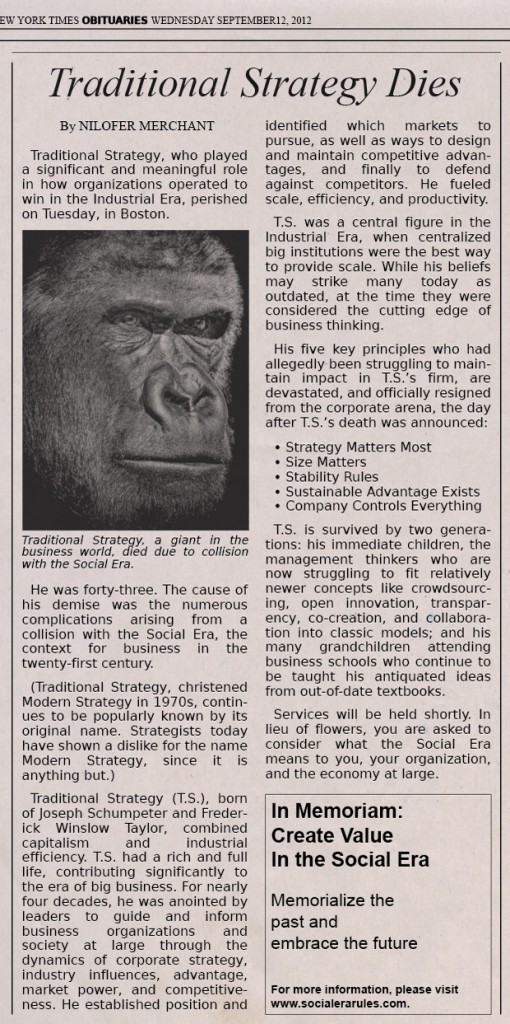When I say, “Social is and can be more than media,” people resist. It’s as if the two words (social and media) are now permanently fused together. But they shouldn’t …
Lifetime Opportunity Value Equation (LOVE)
One of the challenges with a qualitative process framework like the LOVE model is that it is hard quantify all the benefits, especially during the initial stages of adoption. The latest McKinsey Global Survey looks at the business benefits from Web 2.0. Operationalizing the LOVE model in practice leverages many aspects of Web 2.0, so the McKinsey data is perhaps the most relevant data we currently have for this type of approach.
Beyond Web 2.0
A popular sport in Silicon Valley is arguing about what exactly Web 2.0 is or is not. Is it about collaboration? Social networking? Custom services?
We think the argument misses the point. Web 2.0 is just an effect of a broader trend: the fundamental remaking of the software industry as a result of the Internet.
No, No, Rupert
In newspaper publishing, Rupert Murdoch is cutting a wide swath through the Wall Street Journal and the New York Post –even shrinking the physical size of both newspapers to cut costs.
New channels–Craigslist, Yahoo, Google AdWords and others–have pulled classified and other types of ads away from newspapers. The New York Times, in an attempt to increase its online readership, is working on an API that aims to make the entire newspaper “programmable,” says Josh Catone at ReadWriteWeb.
Security Fears Limit Growth of Web Apps
The rise of web applications — websites that replace the functions of a software program that was traditionally installed on a personal computer — is one of the hottest topics in the tech industry. Huge numbers of “Web 2.0” startups are competing for user attention, and many observers predict rapid growth for web applications.
But most of the analysts refer to web application growth as something that’s going to happen in the future. The reality is that web app usage has already stretched far beyond early adopters, and is moving rapidly into the mainstream of US home computer users. A recent survey, conducted by Rubicon Consulting, showed that more than a third of them already use at least one web application on a regular basis. Students are moving especially fast, with more than 50% using web applications.
- Culture & Leadership (146)
- Entrepreneurship (160)
- Featured (8)
- Market Power (216)
- onlyness (124)
- Social (80)
- Talks (29)
- Technology & Trends (78)
- The Personal Story (81)
- Uncategorized (195)






